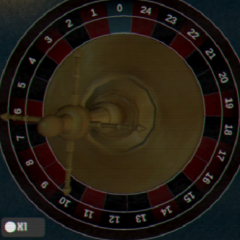Five Nights at Freddy’s 4
Five Nights at Freddy’s 4 removes the workplace setting from earlier entries and moves the action to a child’s bedroom. The player controls a young character who must survive each night by monitoring threats that approach from different directions. Instead of using cameras, the player listens for audio cues and reacts by closing doors or using a flashlight. The limited space and reliance on hearing replace the tools used in previous games, creating a new structure built around timing and reaction.
Five Nights at Freddy’s 4 removes the workplace setting from earlier entries and moves the action to a child’s bedroom. The player controls a young character who must survive each night by monitoring threats that approach from different directions. Instead of using cameras, the player listens for audio cues and reacts by closing doors or using a flashlight. The limited space and reliance on hearing replace the tools used in previous games, creating a new structure built around timing and reaction.
Core Mechanics and Threats
The gameplay takes place entirely within one room. The player stands between two doors, with a closet in front and a bed behind. Each area must be checked regularly to avoid attacks from approaching enemies. Listening carefully becomes the most important mechanic, as different audio cues indicate which direction a threat is coming from. Incorrect actions—such as shining a light at the wrong time—can result in an immediate loss. Each animatronic follows specific behaviors that change as the game progresses.
Enemies the player must watch for include:
· Nightmare Freddy, who builds up behind the player if unchecked
· Nightmare Bonnie, who appears in the hallway to the left
· Nightmare Chica, who comes from the hallway to the right
· Nightmare Foxy, who hides in the closet and must be contained
· A final figure that appears after several nights and alters gameplay
Sound-Based Survival
Success in Five Nights at Freddy’s 4 depends on precise use of sound. The player must determine whether to close a door, flash the light, or step back based on small audio cues. There is no interface to track progress and no way to predict each encounter with certainty. Each night becomes a pattern recognition exercise, where survival depends on memory, rhythm, and fast decision-making. Mistakes are not announced and are often discovered only through failure.
Storytelling Through Fragments
The game includes intermissions between nights in the form of 8-bit styled minigames. These scenes slowly reveal the background of the child, his family, and an incident that connects to other games in the series. The timeline is not linear, and many events must be interpreted by the player. Dialogue is minimal, and most storytelling is done through action and environment. These segments provide emotional context but never explain the full meaning directly.
Endings and Theories
Five Nights at Freddy’s 4 does not offer a single clear conclusion. Instead, the game ends based on the player’s performance and the choices made in the final levels. Certain actions unlock alternate minigames or hidden events. The outcome is open to interpretation and continues to be a topic of discussion within the fan community. The game’s events are considered key to understanding the overall story across the franchise and are often referenced in later titles.














Comments